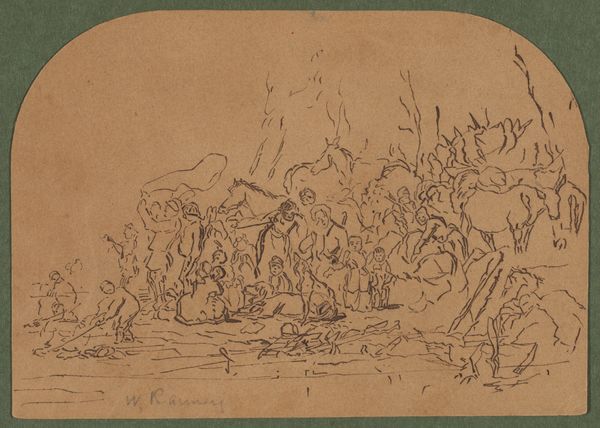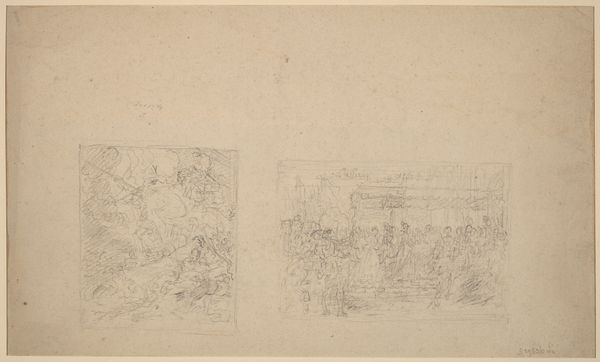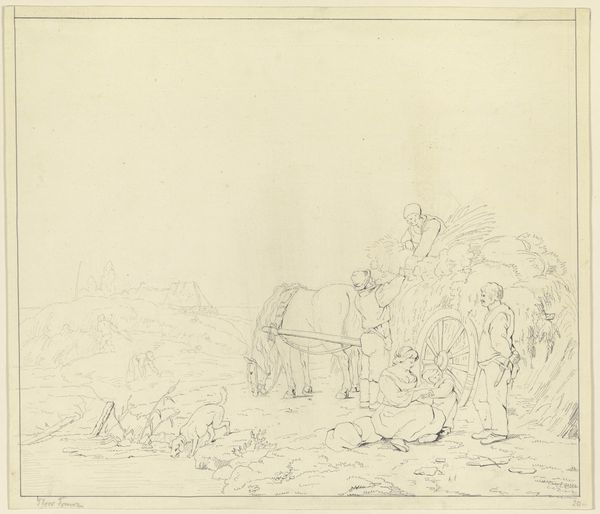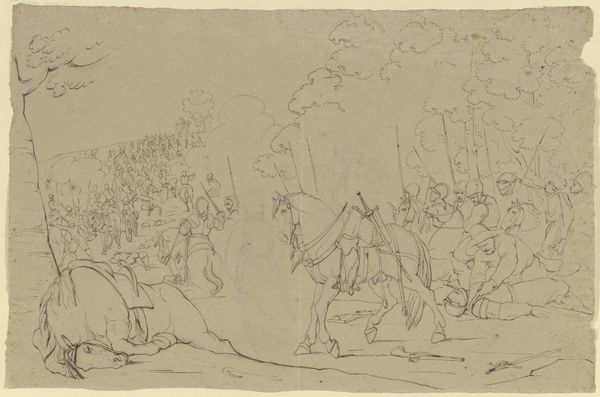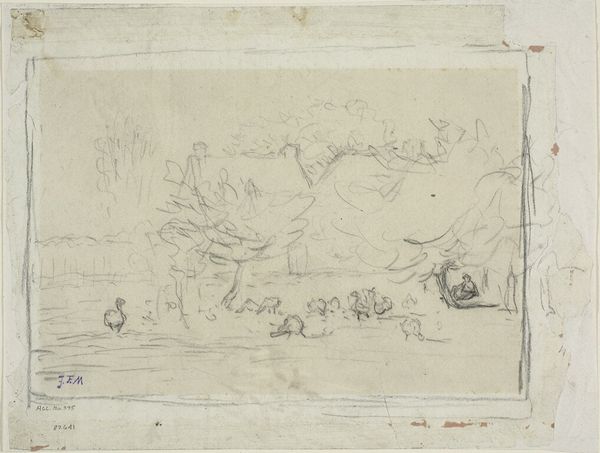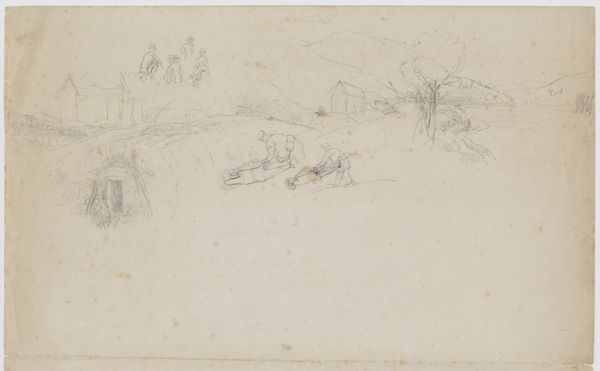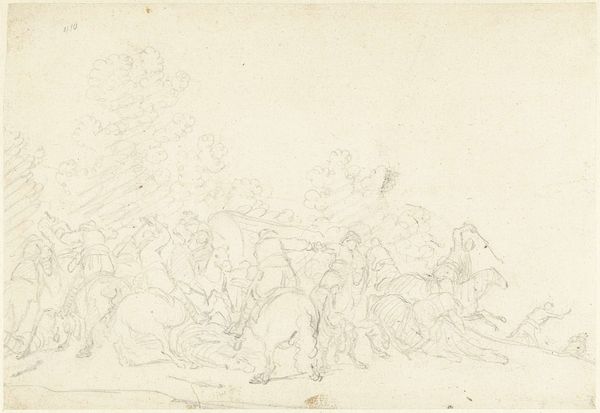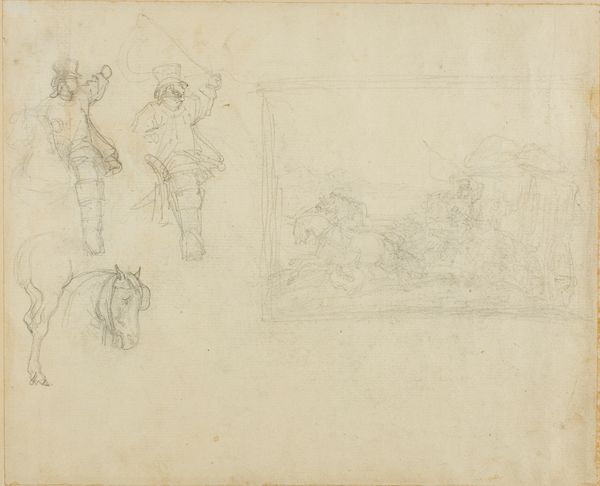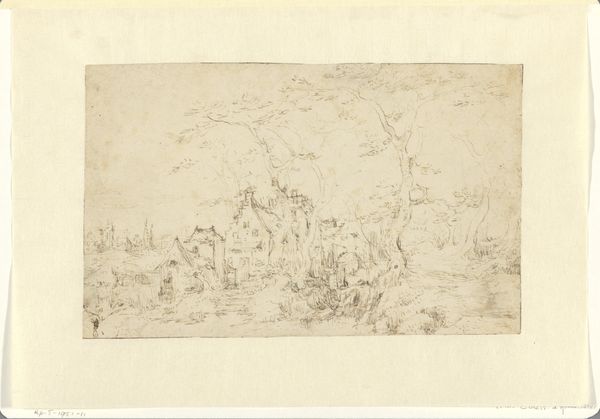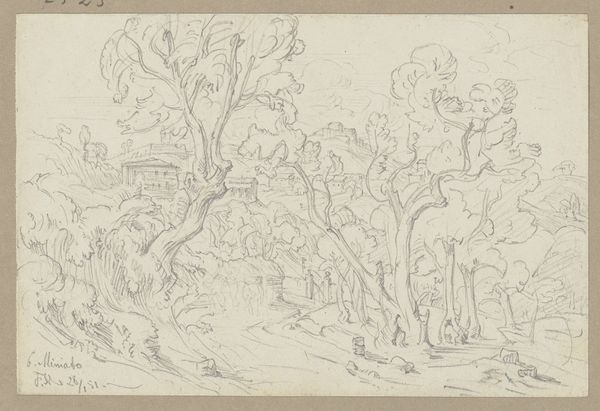![End of the March [recto] by Winslow Homer](/_next/image?url=https%3A%2F%2Fd2w8kbdekdi1gv.cloudfront.net%2FeyJidWNrZXQiOiAiYXJ0ZXJhLWltYWdlcy1idWNrZXQiLCAia2V5IjogImFydHdvcmtzLzZiYjlkYmU3LTE3ZDQtNDkwNy04NmM1LTkyYWI3YjM5ZTYwMC82YmI5ZGJlNy0xN2Q0LTQ5MDctODZjNS05MmFiN2IzOWU2MDBfZnVsbC5qcGciLCAiZWRpdHMiOiB7InJlc2l6ZSI6IHsid2lkdGgiOiAxOTIwLCAiaGVpZ2h0IjogMTkyMCwgImZpdCI6ICJpbnNpZGUifX19&w=3840&q=75)
drawing, paper, pencil
#
drawing
#
landscape
#
paper
#
pencil
#
academic-art
#
realism
Dimensions: sheet: 9.1 x 12.4 cm (3 9/16 x 4 7/8 in.)
Copyright: National Gallery of Art: CC0 1.0
Winslow Homer created this pencil sketch, "End of the March," on a small sheet of paper, capturing a scene likely from the American Civil War era. The drawing depicts a group of figures, possibly soldiers, at the tail end of a march, their forms rendered with loose, hurried lines. Homer's choice of subject matter places this work within the context of a nation grappling with profound social and political upheaval. He worked as a freelance illustrator, and many of his images dealt with the war. Given the time in which it was produced, such images played a crucial role in shaping public perception. To fully understand this sketch, one must delve into the history of the Civil War, its causes and consequences, and the complex social dynamics of the period. Archival materials, such as letters, diaries, and newspapers, can offer invaluable insights into the experiences of soldiers. Understanding the institutional landscape of the art world at the time is also helpful: were images like this promoted by magazines and galleries? Ultimately, the meaning of this artwork is contingent upon its historical context.
Comments
No comments
Be the first to comment and join the conversation on the ultimate creative platform.
